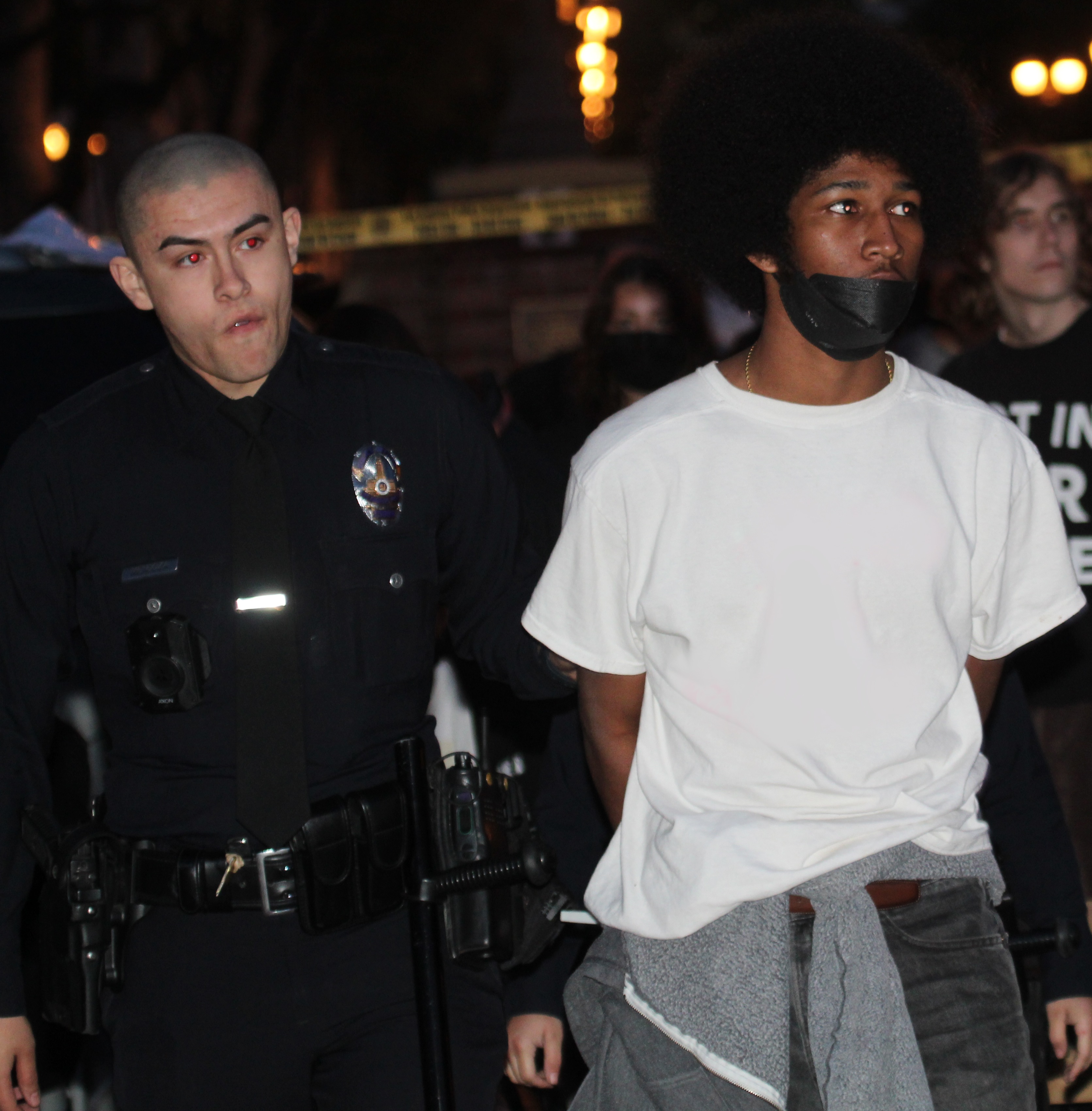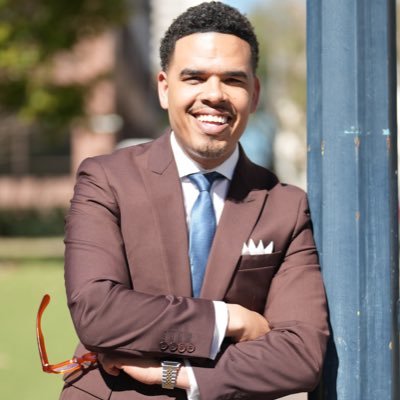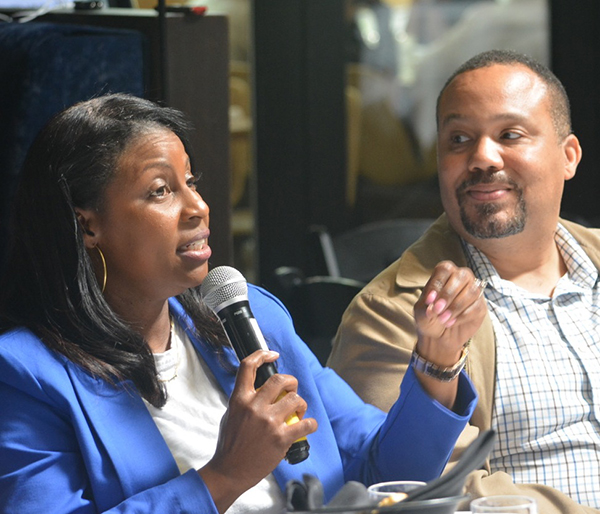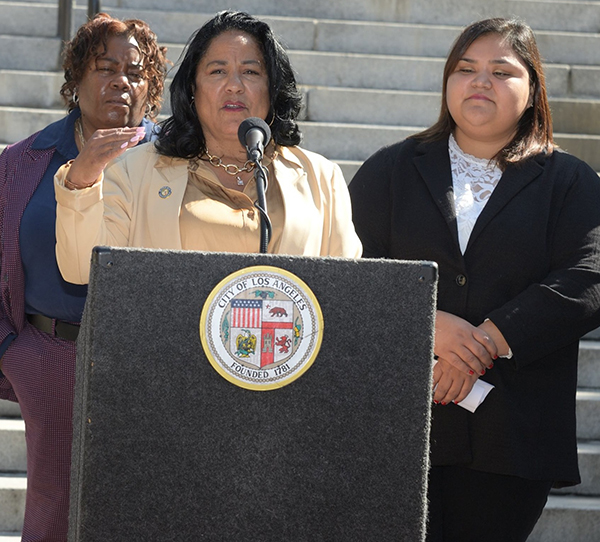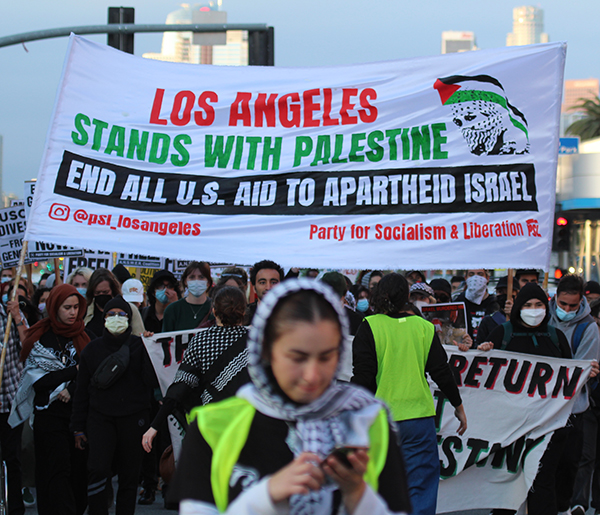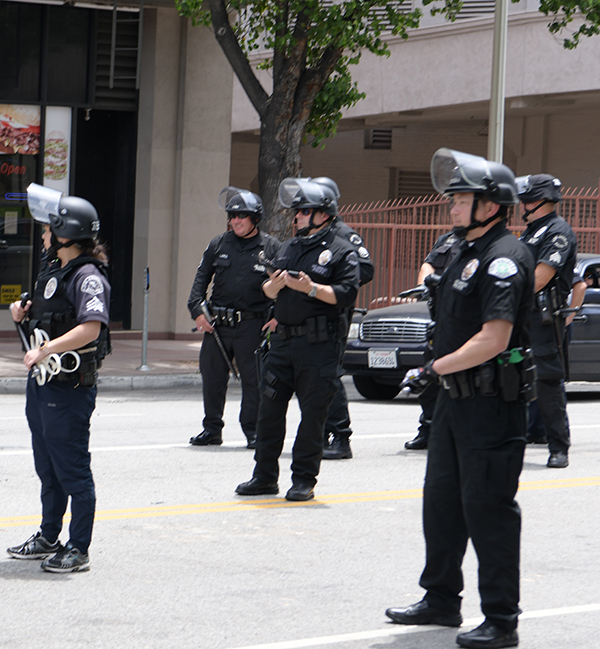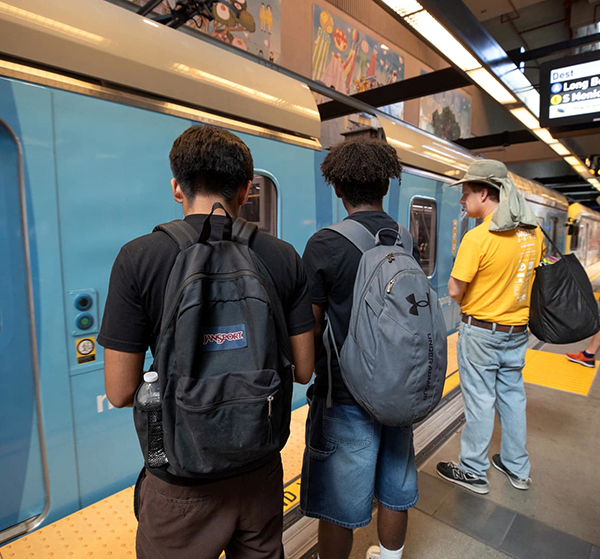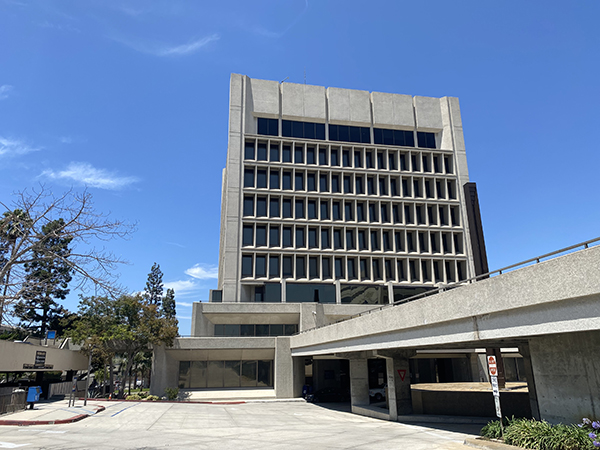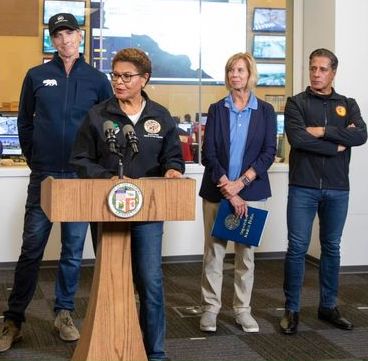Wave Wire Services
LOS ANGELES — The Southland managed to survive the weekend pounding it took from Tropical Storm Hilary with no major damage reported despite the record-setting rainfall.
Rains tapered off Aug. 21 and had largely departed the region by that afternoon, while utility and repair crews worked to resolve power outages, clear mud flows and remove fallen trees and branches.
The storm unleashed its fury Aug. 20, making driving treacherous and forcing sporadic road closures due to flooding or mud. Downed trees or branches were reported across the city, with more than 1,000 such cases referred to city crews. Only 179 of them were officially cleared as of the next day.
Part of a large tree came down overnight in the Sun Valley area and damaged some cars parked nearby. City crews also responded to 61 reported potholes.
Most local rainfall records were shattered Aug. 20 thanks to the almost daylong downpours brought on by the rare tropical storm.
The highest rainfall total recorded over a two-day period ending at 7 a.m. Aug. 21 was at Mount Wilson, where the National Weather service reported 8.56 inches of rain.
Beverly Hills received nearly 5 inches of rain with Santa Monica reporting about 3.5 inches.
Roughly 3 inches was recorded in downtown Los Angeles while Pasadena saw 2.4 inches.
Mayor Karen Bass thanked residents for heeding warnings to be prepared and stay home during the brunt of the storm. She said residents should continue to be wary of possible impacts, noting that “sometimes damage can occur in the hours and days after a storm hits, so Angelenos should continue to stay vigilant.”
Los Angeles Fire Department Chief Kristin Crowley said that, over a 24-hour period during the storm, the department responded to 1,833 emergency incidents and that its dispatchers received more than 4,000 calls — roughly 1,000 more than the daily average. But she said there were no reports of any major injuries or damage related to the storm.
Flooding impacted a series of businesses on Melrose Avenue, with several inches of water reported inside some of the structures.
Roughly 41,000 Los Angeles Department of Water and Power customers lost power at some point, according to the agency. Due to the uncertainty about the storm’s impact overnight, all Los Angeles Unified School District campuses were closed Aug. 21 but reopened the next day.
Los Angeles County Board of Supervisors Chair Janice Hahn signed an emergency declaration around midday Aug. 20, “signaling to state and federal agencies that Los Angeles County is ready to accept any assistance they can give,” she said.
Hilary resulted in the first tropical storm warning ever issued for Southern California. Prior to that, a tropical storm had not made landfall in California since 1939.
Along with Hahn, Gov. Gavin Newsom issued a state of emergency for the area, and Bass did likewise and activated the city’s Emergency Operations Center at Level 2 — one level short of the most critical status.
Hahn and Bass also stressed that additional homeless shelters were being operated and extensive outreach was done to move the homeless out of flood control channels and other areas susceptible to flooding.
Officials said the city was providing nearly 400 units of emergency temporary shelter for people experiencing homelessness through the storm. Five shelters opened Aug. 19 in high-risk areas near waterways and potential flood zones.
Three additional shelters were opened the next day, and the city was offering transportation to shelters as a part of outreach efforts.
Adding to the mix, a strong earthquake centered in Ventura County shook most of Southern California Aug. 20. The magnitude-5.1 temblor struck at 2:41 p.m., about 4 miles southeast of Ojai, according to the U.S. Geological Survey. It was quickly followed by a series of aftershocks, the largest of them measuring a magnitude of 3.6. There were no immediate reports of injuries or damage from the quake.

